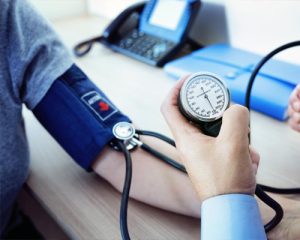Hypertension Management
 Introduction
Introduction
Hypertension or high blood pressure is an established health problem that affects millions of adults across the world. Chronic health disorder with persistently elevated blood pressure in the arteries is a critical health problem leading to heart disease, stroke, and kidney failure. Despite its unabated high incidence, many people with high blood pressure do not know they have it. Why education and effective management are increasingly relevant, i.e. modern medicine’s methods of management. This guide hopes to offer some practical ways in how to manage high blood pressure, listing its causes, symptoms, ways of prevention, and treatment options, as well as putting a meal plan in place that supports healthy BP levels.
Causes of high blood pressure
Various factors condition the development of high blood pressure. These can be divided into primary (essential) hypertension, secondary hypertension.
- Primary hypertension: This type per se has no identified cause and probably develops in the course of several years. Major contributing factors include:
- Genetics: A family history of hypertension is a risk factor for you.
- Aging: Blood pressure is also a reflection of age.
- Obesity: The accumulation of a significantly large body weight correlates with BP going up.
- Lifestyle-related factors: Poor eating habits, physical inactivity, and bingeing on alcohol are associated with increased blood pressures too.
- Stress: Another factor which, when in excess, can give a temporary rise in blood pressure.
- Secondary hypertension: This type is related to underlying conditions like:
- Kidney disease: Kidney malfunction can result in increased blood pressure.
- Hormonal disorders: Illnesses like Cushing’s syndrome or hyperaldosteronism can manifest high blood pressure.
- Hormonal imbalance: Increased blood pressure may be caused by conditions such as Cushing’s syndrome or hyperaldosteronism.
- Medications: Some medications, including NSAIDs, decongestants, and selected antidepressants, could bring about an increase in blood pressure.
High Blood Pressure Symptoms
 Hypertension is frequently referred to as a “silent killer” because many people remain asymptomatic until complications occur. A subset may experience some or all of the following symptoms:
Hypertension is frequently referred to as a “silent killer” because many people remain asymptomatic until complications occur. A subset may experience some or all of the following symptoms:
- Headaches
- Dizziness or lightheadedness
- Nosebleeds
- Shortness of breath
- Blurred vision
In general, the only approach to determine whether an individual has high blood pressure is from regular blood pressure monitoring, as for many, the first time they learn of the disease is when a serious problem is already developing.
Strategies for Prevention
Preventing high blood pressure from developing in the first place or managing detected conditions with lifestyle modifications is possible through the following proactive measures:
- Diet: Good eating including little or no salt, lots of vegetables, fruits, whole grains, and lean proteins can aid in blood pressure control. The DASH (Dietary Approaches to Stop Hypertension) diet can greatly reduce blood pressure.
- Exercise: At least 150 minutes of moderate exercise each week; they should allow activities such as walking, cycling, and swimming.
- Limiting Alcohol: Decreasing alcohol intake can lower blood pressure, generally one drink for a woman and two for a man.
- Avoiding Tobacco Products: Stopping smoking and steering clear of its secondhand effects would increase cardiovascular health and lower blood pressure.
- Managing Stress: Participate in relaxation relief activities to lessen overall stress levels, including yoga and meditation.
Treatment Options
When lifestyle measures on their own are insufficient for the treatment of high blood pressure, there arises the need for medical intervention. Management is typically guided by a combination of the following:
- Medications: There are many different classes of anti-hypertensive drugs that will lower blood pressure, such as:
- Diuretics (e.g., hydrochlorothiazide)
- ACE inhibitors (e.g., lisinopril)
- Calcium channel blockers (e.g., amlodipine)
- Beta-blockers (e.g., metoprolol)
- Regular Monitoring: Continuous monitoring of blood pressure measures will help track changes and help in estimating the efficacy of the therapy administered.
- Consultation: Check-ups and talks with healthcare professionals are, form a clinical standpoint, very useful towards inherent dynamics of its plans.
Eating Plans for a Blood Pressure-friendly Diet
Arrangements where diet could go far away to keep lowering the blood pressure may be incredibly powerful and entertaining. Here is an exemplary weekly meal plan in line with the DASH diet:
Day 1
- Breakfast: Oatmeal with banana and cinnamon
- Lunch: Grilled chicken salad with spinach and balsamic vinaigrette
- Dinner: Stuffed bell pepper with quinoa, corns, and black beans
- Snack: Almonds (plain)
Day 2
- Breakfast: Greek yogurt with berries and honey drizzle
- Lunch: Whole-grain turkey wrap with hummus and lettuce
- Dinner: Baked salmon with broccoli and sweet potatoes
- Snack: Baby carrots dipped with guacamole
Day 3
- Breakfast: Spinach, banana, and almond milk smoothie
- Lunch: Lentil soup with a slice of whole-grain bread
- Dinner: Stir-fried tofu mixed with veggies and brown rice
- Snack: Apple slices with almond butter
Day 4
- Breakfast: Scrambled eggs with avocado and diced tomatoes
- Lunch: Quinoa salad with chickpeas, cucumber, and lemon dressing
- Dinner: Grilled shrimp with asparagus and wild rice
- Snack: Mixed fruit salad
Day 5
- Breakfast item: Wholegrain toast, natural peanut butter, and banana slices
- Lunch item: Spinach and feta stuffed chicken breast with a side green salad
- Dinner item: Zucchini noodles topped with marinara sauce and lean ground turkey
- Snack item: Sunflower seeds (unsalted)
Day 6
- Breakfast item: Chia seed pudding with almond milk and fresh berries
- Lunch item: Black bean salad with corn, peppers, and cilantro
- Dinner item: Baked tilapia with lemon and an herb mix, served with green beans
- Snack item: Sliced cucumber with tzatziki
Day 7
- Breakfast: Smoothie with kale, apple, and flaxseed
- Lunch: Mediterranean quinoa bowl with olives, tomatoes, and feta cheese
- Dinner: Vegetable stir-fry with brown rice and a light soy sauce
- Snack: Celery sticks with hummus
Conclusion
Blood pressure management is a key component of overall wellness in our bodies and the prevention of life-threatening cardiovascular ailments. By fully understanding the causes, sign, and signal, as well as preventive and therapeutic measures, individuals are better enabled to be their own health advocate. Lifestyle changes in terms of diet and exercise are a cornerstone in the management of hypertension. A careful commitment to treatment plans and regular consultation with healthcare providers will give a person some peace of mind in this regard. By being proactive, now, people can achieve better health by diminishing the danger of high blood pressure.
 Introduction
Introduction Hypertension is frequently referred to as a “silent killer” because many people remain asymptomatic until complications occur. A subset may experience some or all of the following symptoms:
Hypertension is frequently referred to as a “silent killer” because many people remain asymptomatic until complications occur. A subset may experience some or all of the following symptoms: